Walk into a plant-filled room. Feel the difference?
The air feels fresher. Stress melts away. Magic.
Plants do that. They transform spaces. Empty corner? Blank wall? Add green. Boom. Different room.
Worry about killing plants? Been there. Good news – you’ve got options. Real plants, fake plants, botanical prints. There are stylish nature-inspired design ideas everyone can use. No green thumb needed.
5 Plant Tricks Anyone Can Use (Save These!)
- Mix heights – Tall plant in the corner, small ones on the table, trailing vines on the shelf
- Try plant art – No watering needed. Perfect for dark rooms or busy people
- Add texture – Woven baskets, wood bowls, and rope plant hangers bring extra nature vibes
- Start small – One leaf-print pillow or framed plant sketch makes a big difference
- Pick real materials – Natural fabrics and wood feel as good as they look
Like these ideas? Pin them for later or share with a friend who needs more green in their life!
Need a Room Refresh? Plant Art Works Every Time
One large leaf print transforms a blank wall. Zero watering. Zero maintenance. Just instant impact—even if you’re choosing art to stage your home.
Want to make a bigger statement? Try plant wallpaper on a single wall. Your bedroom or dining room works perfectly. Not ready for wallpaper? Group three or four plant prints together instead.
Match art to your style. Love classic looks? Choose detailed sketches by famous botanical artists with faded colors. Prefer modern? Go for black and white palm prints or simple leaf outlines with clean lines.
Where Should You Hang Plant Prints? These Spots Need Love
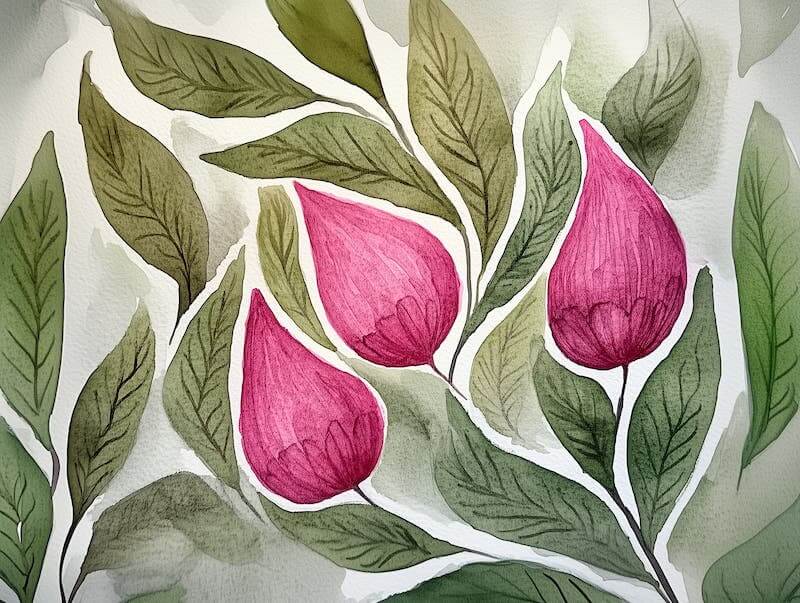
That weird hallway wall? Crying for a plant print.
Above your kitchen sink? Empty and sad. Add a small leaf print.
Bathroom walls? They deserve plants too.
Stop thinking living room and bedroom. Think different.
Entryway. Laundry room. That random wall by the stairs.
Mix up your frame sizes. Some big, some small. Makes it look like you’ve collected them forever.
Got actual leaves? Press them between glass. Free art that looks expensive.
Don’t just stop at walls. Plant patterns work on everything. Pillows. Bedsheets. Curtains. Go wild.
Fake a Green Thumb: Simple Plant Styling Anyone Can Do
Plants aren’t just pretty. They’re living design pieces. Place them right and they’ll make your whole space feel better.
Empty corner? Try a tall fiddle leaf fig or bird of paradise. Their big leaves create natural sculpture.
Small space? No problem. Hanging plants with trailing vines add green without using precious floor space.
The pot matters as much as the plant. Skip basic plastic. Try a painted ceramic bowl, woven basket, or sleek metal stand. The right container makes a normal plant look special.
Bored With Basic Plant Displays? Try These Instead
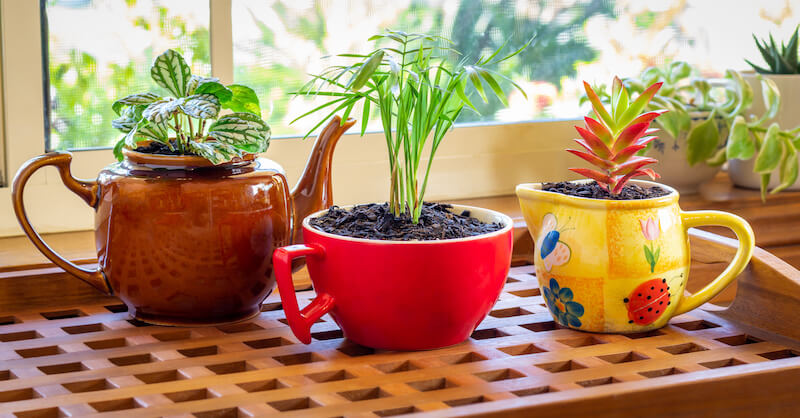
Create a plant wall – Install simple shelves just for showing off small plants
Use vintage finds – Old wooden ladders or metal carts make perfect plant stands
Hang plants at mixed heights – Create a curtain effect with varied levels
Group by leaf color – Plants with similar green shades look intentional together
Try unusual containers – Old teapots, wooden boxes, or metal containers add personality
No time for fussy plants? Try air plants, succulents, or snake plants. They thrive on neglect but still bring nature vibes indoors.
Can’t DIY? These Plant Projects Are Actually Easy
Turn thrift store finds into custom plant decor. It’s cheap, eco-friendly, and adds personal charm store-bought stuff can’t match.
Found an old wooden crate? Paint it, add wheels, and fill with potted herbs. Kitchen garden you can move around? Done.
Spotted plain glass vases? Add pressed leaves and a layer of glue for custom botanical decor.
Old picture frames work perfectly for showing pressed flowers or ferns. Just remove the glass, arrange dried plants on white paper, and reassemble. Instant plant art for way less than store prices.
5 One-Hour Plant Projects That Look Store-Bought
Make leaf coasters – Press small leaves in clear resin for useful art
Create plant bookends – Fill glass jars with soil and small succulents
Build a tiny terrarium – Layer pebbles, charcoal, and soil, then add mini plants
Paint with leaves – Use real leaves as stamps to make patterns on fabric or paper
Make a moss wall – Attach preserved moss to the frames of artwork in a gallery wall for no-maintenance green art
Most of these projects take less than an hour and use stuff you probably already have.
Kill Every Plant? Try These No-Fail Botanical Fabrics
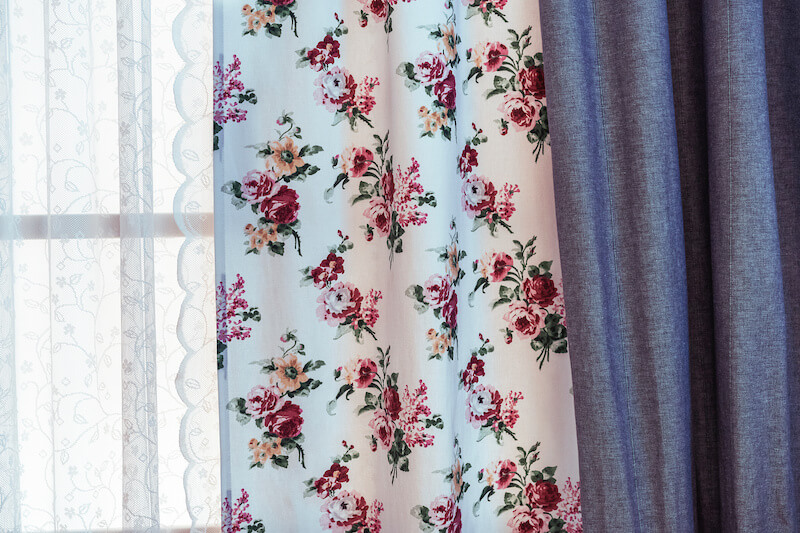
Plant fabrics add instant nature to any room. No watering. No care. Just beauty.
Bedroom – Cotton or linen sheets with subtle leaf patterns feel calm and help you sleep better
Kitchen – Washable plant-themed towels add living color to practical spaces
Bathroom – A fern-patterned shower curtain transforms boring white tiles instantly
Living Room – Velvet pillows with embroidered leaves add rich texture and color
Dining Room – A simple table runner with leaf designs makes everyday meals feel special
Want big impact? Recover a chair in a bold leaf print. The right pattern creates a statement piece for any room.
Not ready for furniture changes? Start smaller. Plant-themed throw pillows add pattern and can move from room to room.
Mixing patterns? Keep it cohesive. Pair a large leaf pattern with a smaller flower print in colors that work together. Or stick with one color family – different green patterns naturally match even with varied designs.
How to Make Plants Work With Your Existing Style
Plants fit any style. The secret? Choosing the right ones and showing them in ways that match your look.
Love Minimalism? These Plants Won’t Clash
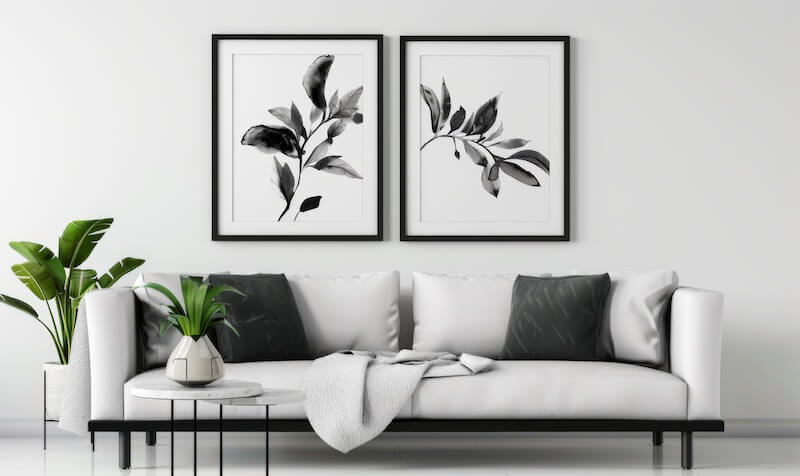
Minimalist style works best with sculptural plants.
A single snake plant in a plain white pot creates the perfect clean statement.Keep containers matching. Group all-white planters for a cohesive look. Or choose plants with similar leaf colors – all dark green or all silver – for visual calm.
For wall art, skip the fancy stuff. Simple black and white plant photos or basic line drawings of leaves work perfectly. They add that touch of nature without messing up your clean, peaceful space. Pure and simple.
Create That Lived-In Farmhouse Feel With These Plants
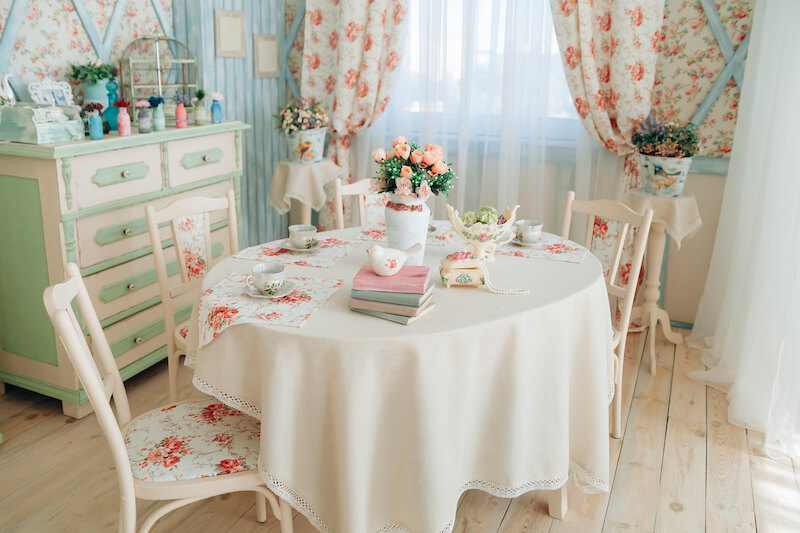
Farmhouse style isn’t about perfection. It’s about that casual, collected-over-time feel.
Grab some herbs in clay pots. Line ’em up on windowsills for kitchen decor that’s as stylish as it is useful. Or stick some ferns in old metal buckets on weathered wooden stools. Instant farmhouse vibes.
What would grow in a real farmhouse garden? That’s your shopping list. Lavender. Rosemary. Ivy. They bring that countryside feeling indoors without trying too hard. Display them in vintage crocks, mason jars, or those blue-speckled enamel containers. Perfect.
Your wall art should look like it’s been around a while. Press some herbs in weathered frames. Find botanical prints with yellowed edges. Or hunt down actual vintage plant pictures from old books at thrift stores.
Want Boho Plant Vibes? Layer These 3 Ways
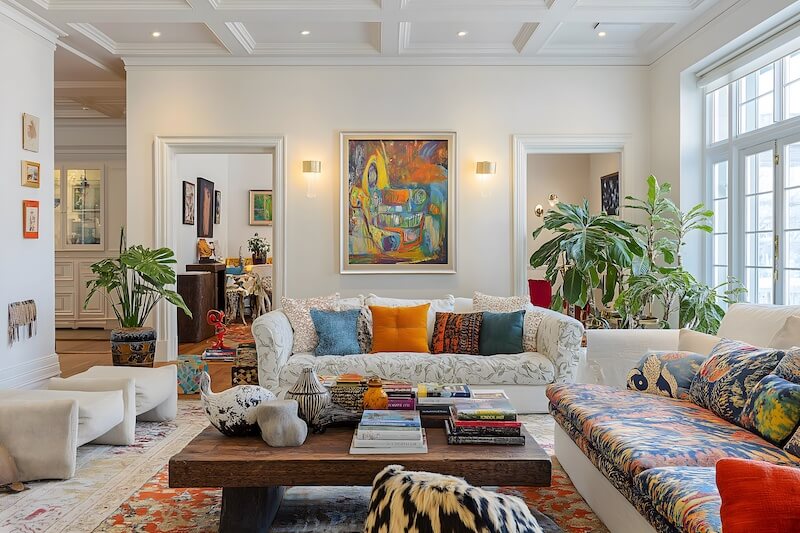
Bohemian spaces aren’t shy about plants. More is definitely more. Like living in your own personal jungle.
First trick: mix up your plant types. Some trailing down. Some standing tall. Some flowering. Creates this lush, wild feel that’s totally boho.
Second move: forget matching pots. That’s too planned. Instead, collect containers from everywhere – that basket from your vacation, that colorful pot from the flea market, that beaded planter you made. The more random they look together, the better.
Last layer: patterns on patterns on patterns. Leaf-print pillows next to floral curtains with botanical wallpaper behind them. Should look like you’ve been collecting these things forever. Not like you bought a matching set.
Add Timeless Elegance With These Classic Plant Ideas
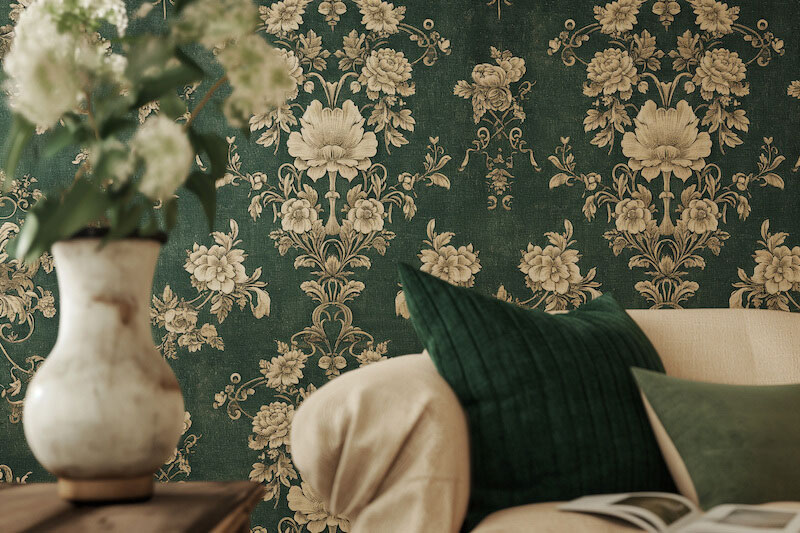
Traditional spaces love order and symmetry. Think perfectly trimmed plants in matching ceramic planters on either side of your fireplace. Or orchids arranged just so on your polished wood table.
Your botanical art should feel timeless. Look for those detailed, scientific-looking plant illustrations in matching gold frames. Hang them in a perfect grid or formal grouping. Nothing random here.
For fabrics, stick with the classics. Those timeless botanical patterns like damask or those Asian-inspired scenes with gardens and birds. They’ve worked for hundreds of years for a reason.
How to Soften Industrial Spaces Without Losing Their Edge
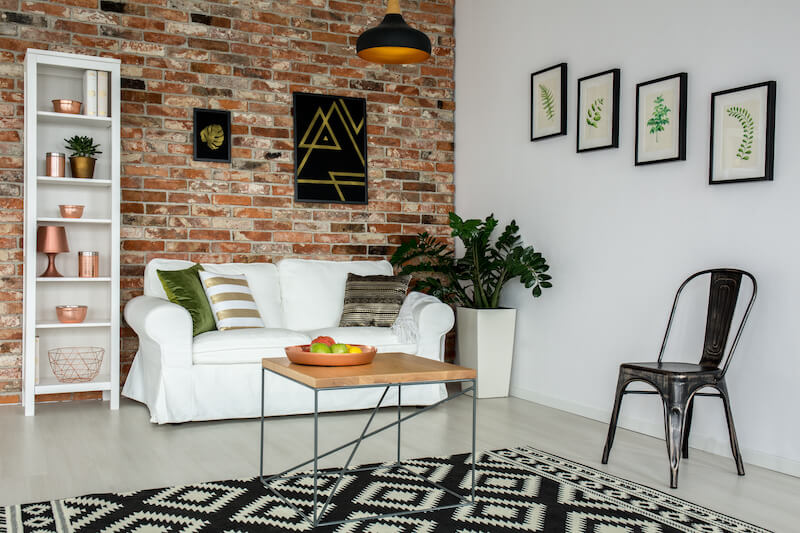
Brick walls. Metal pipes. Concrete floors. Perfect plant backdrop.
Living green against hard surfaces? Instant magic.
Go big here. Tiny plants get lost. That massive monstera? Perfect. Tall fiddle leaf? Even better.
Group plants together. Creates more punch than spreading them out.
The containers matter. Skip the cute ceramic stuff. Think metal planters. Concrete pots. Old factory containers. Keeps that urban edge while adding life.
Start Your Plant Journey Without Getting Overwhelmed
Want plants but feeling lost? Start tiny.
Pick one sad spot in your home. Just one. Add something green. A single plant. One botanical print. Done.
Living with plants changes things. Better air. More life. Natural rhythm.
Not just pretty. Good for you too.
Choosing plants doesn’t have to be hard. Ask yourself:
How much light does your room actually get?
How much time do you really have for plant care?
What would look good with your stuff?
Most important? Pick what makes you happy when you see it.
Need help getting started? Our botanical prints, planters, and natural fabrics make it easy. Simple, affordable ways to bring nature home.
Your Plant Questions Answered
What does botanical art mean?
Botanical art showcases plants in a way that’s both pretty and accurate. Unlike regular flower paintings, botanical art tries to get the details right – how the leaves attach, what the seed pods look like, the exact color of the bloom.
It started as a way for scientists to record plants before we had cameras. Now people love it for both beauty and scientific value. Some botanical art looks vintage and timeless. Other pieces feel modern and bold. All of it brings nature’s details into focus.
What is a botanical artist called?
A botanical artist is usually called a botanical illustrator or botanical artist. Some prefer “scientific illustrator” if they focus on technical accuracy for textbooks or research. Others use “plant illustrator” or “nature artist” for more commercial or decorative work.
The term changes based on how scientific their approach is. Some create fine art while others make practical illustrations for plant identification. Most botanical artists today blend scientific accuracy with artistic style, creating work that’s both beautiful and true to the plants they depict.
What are the characteristics of botanical art?
Botanical art isn’t just pretty flowers. It’s science-meets-art.
What makes it special? Real accuracy. Like really, really accurate.
Botanical-themed colors and shapes match exactly what you’d see in nature. Not what the artist wishes they saw.
It shows all the little details – those tiny leaf veins, how stems connect, the pattern of growth.
Often you’ll see the whole plant life cycle in one image – roots, seeds, flowers, and fruit together.
Backgrounds stay clean and simple – usually white or light – so you can focus on the plant details.
The level of detail is crazy precise. Tiny hairs on stems. The exact pattern of a leaf edge. Nothing gets missed.
Plants look natural, not posed or idealized. How they’d actually grow in real life.
Good botanical art finds that sweet spot between beautiful and true.
How do I arrange my living room with plants?
Start with the right spots. Place tall plants like fiddle leaf figs in empty corners. Add medium plants on side tables or plant stands near windows. Small plants work on coffee tables, bookshelves, or wall-mounted planters.
Mix plant types. Combine upright plants, trailing vines, and plants with different leaf shapes. Group in odd numbers (3 or 5) for a natural look.
Consider light needs. Put sun-lovers by windows and shade plants in darker spots.
Use plants to solve problems. Tall plants cover up blank walls. Hanging plants fill vertical space. Large plants break up big rooms into cozy zones.
The pots matter too. Choose containers that match your style and coordinate with each other.
What is interior design with plants called?
Ever heard of “biophilic design”? That’s the fancy term for decorating with plants and nature stuff.
It’s based on this idea that humans just feel better around natural elements. Makes sense, right? We spent most of our history outdoors, not staring at screens.
But it goes beyond just plopping a few plants around. True biophilic design includes natural light, views of outdoors, water features, natural textures, and patterns that remind us of nature.
All these elements actually reduce stress. Clean the air. Boost creativity. Real benefits, not just looks.
The trend has exploded in homes, offices, restaurants, everywhere. People are tired of sterile, lifeless spaces. We want rooms that feel alive, not just decorated.
What decor style uses a lot of plants?
Bohemian style is absolutely plant-obsessed. Like, can’t-have-too-many obsessed.
This free-spirited look means plants everywhere – hanging from ceilings, crowding every windowsill, spilling off shelves. Total jungle vibes.
Tropical style also loves greenery, focusing on those big, dramatic leaves that scream “vacation” every time you walk in.
Modern organic style is more restrained. Think clean, minimal spaces with just a few statement plants that act like living sculptures.
Jungalow style (newer on the scene) centers completely around plants. From the bedroom to the patio decor, it mixes bold patterns with global finds and tons of greenery.
Urban jungle style throws industrial features together with loads of plants – like nature reclaiming an abandoned factory.
Each has its own plant personality, but boho definitely wins the “most plants per square foot” award.




